There are few things in this world as glorious as Montana in the fall. The crispness in the air, the bugling wildlife, and the golden hues highlighting the hillsides and high peaks collide to form a season of beauty and bounty. There are multiple species of trees that contribute to the warm glow of autumn colors in Montana, but few are as unique as larch trees. Larch trees, classified in the Larix genus and Pinaceae (Pine) family, are deciduous conifers that lose their needles in the fall. The Larix genus is divided into two groups: three North American species and seven Eurasian Species.
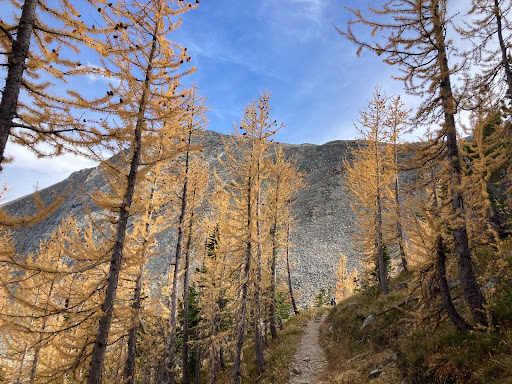
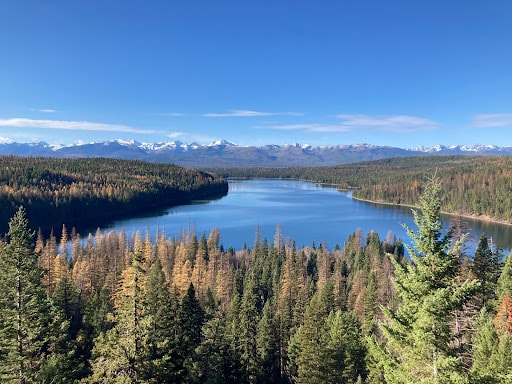
Subalpine larch along a trail in the Anaconda-Pintler Wilderness (left) and Western Larch dotting the hills around Holland Lake (right). Photos by MWF Staffer Ilona Wilde.
Montana is home to two of the three native North American species of larch: Subalpine larch (Larix lyallii) and Western Larch (Larix occidentalis). Conifers are usually distinguished by their cones, needle-like leaves, and evergreen branches. Larch trees are an outlier in the Conifer family, with their needles turning a bright gold every autumn and dropping to the forest floor. During this process, the tree sequesters nutrients (mostly nitrogen) from its needles for storage. Shedding foliage in the fall not only relieves weight from the larch’s branches but also reduces the surface area of the tree from high winds. Without their summer needles, snow can fall through the branches rather than collect on the tree, reducing the likelihood of branches breaking from the weight of snow or the force of the wind. These deciduous adaptations help larch trees thrive in high elevations and extreme winter conditions.
Subalpine Larch: Larix lyallii
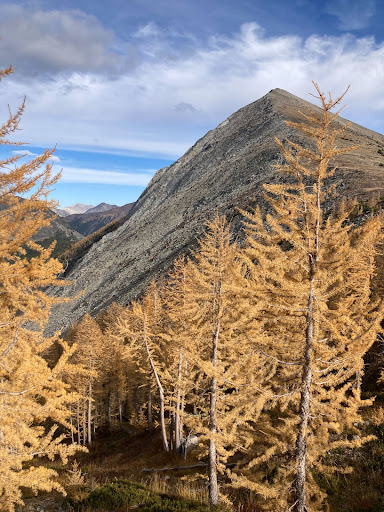
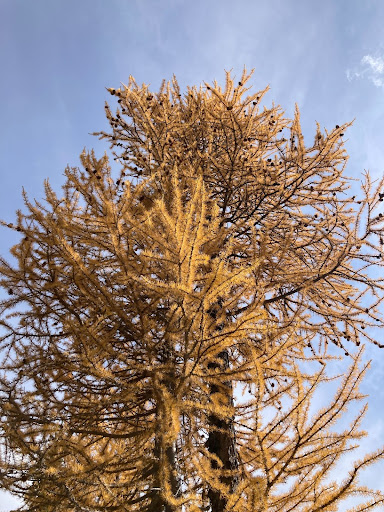
Subalpine larch in the Pintler Mountains. Photos by MWF Staffer, Ilona Wilde.
With both species of larch turning golden in the autumn, the easiest ways to differentiate the species are from their size, habitat, and distribution. Looking closely, alpine larch have wooly hairs covering buds and recent twigs, four sided needles, and usually have broad irregular crowns. They can grow in pure groves, small groups, or as isolated individuals. Alpine larch grow in very cold, snowy, and windy environments, with their record low temperatures near the Continental Divide reaching -50° C (-58° F). These conditions usually stunt the tree’s growth to around 30 to 50 feet tall, but in a wind sheltered basin alpine larch can reach up to 80 feet. These small trees commonly grow near the treeline on slopes covered with granite, quartzite talus (boulders) or in cracks of massive bedrock. Their current range consists of small pockets along the east side of the North Cascades in Washington, and the Rocky Mountains of Idaho, Montana and Canada. Within this distribution, alpine larch is most common in the highest areas of the Bitterroot, Anaconda-Pintler, Whitefish, and Cabinet Ranges of western Montana. Growing between 8,400 and 9,200 feet of elevation in southwestern Montana, alpine larch are usually the dominant trees on high mountain peaks.
Western Larch: Larix occidentalis
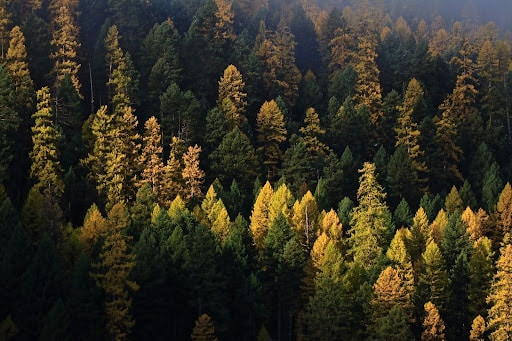
Golden western larch trees surrounded by evergreen conifers. Photo by MWF Staffer, Alec Underwood.
Western Larch, Larix occidentalis, is the largest of the larch genus and grows up to 150 feet tall and can live over 700 years. The world’s largest recorded larch tree can be found near the western shore of Seeley lake, Montana; a 163 feet tall western larch revered locally as “Gus”. Other than size, western larch can also be identified by their three sided needles and cones connecting to the branch on short stalks. In comparison to alpine larch, this species has a much larger distribution across Montana and surrounding areas. Western larches span from the Cascades in British Columbia, Washington and Oregon to the Rocky Mountains of British Columbia, northern Idaho, and Western Montana. Found in moist to wet forests, western larch thrive in cool slopes and valleys to lower subalpine terrain. Unlike alpine larch, which can be solitary, western larches are dependent on growing alongside other tree species, like Douglas-fir and Lodgepole Pine.

Written by MWF’s Western Field Representative Ilona Wilde, featured above in a grove of subalpine larch.

